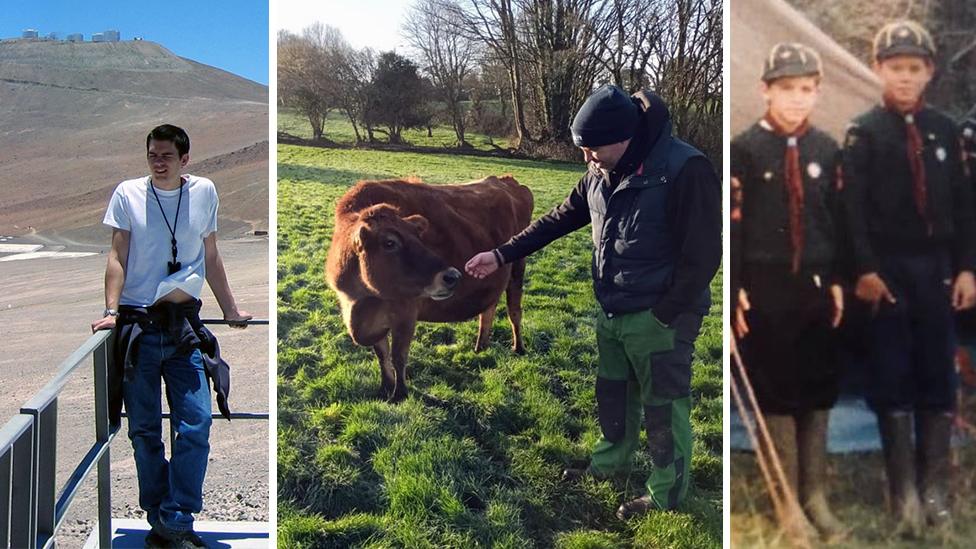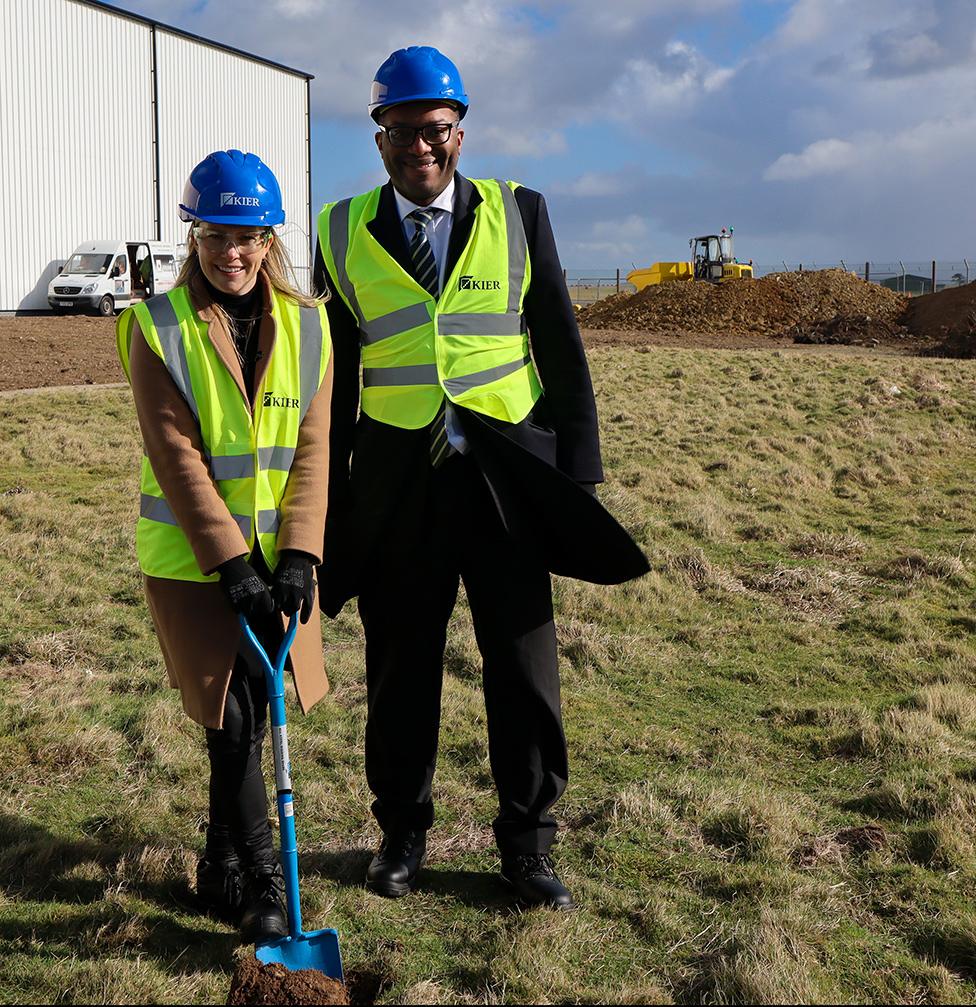Artificial intelligence to help farmers see cloud-covered fields
- Published
The algorithm predicts the view of what the ground should look like under the cloud
A Cornish start-up has developed a technique using artificial intelligence to predict what the surface of the UK looks like under gloomy skies.
The satellite technology is being targeted at the agricultural sector to help farmers better manage their crops.
Cloud too often prevents them from seeing the ground to know where and when to sow seed or apply fertiliser.
Aspia Space, external's technology can produce a clear synthetic image of fields in all weathers.
The Penryn-based company is one of a cluster of operators hoping to benefit from the new space economy being built around Spaceport Cornwall, which is due to start launching rockets from Newquay this summer.
The video at the top of this page shows a before-and-after example of what a typical view of the South West can look like on a grey day, followed by what it would be expected to look like if there were clear skies.
See the surface of Britain change through the seasons of 2020
Aspia's patented algorithm relies on two types on satellite.
One of them is the European Union's workhorse Sentinel-2 spacecraft, which views the ground at so-called optical wavelengths - the type of light to which our eyes are also sensitive.
Its pictures are intuitive and easy to analyse - unless the ground is smothered by cloud, which in the UK is a frequent occurrence.
But another EU satellite, Sentinel-1, uses radar to map the ground. Its microwave emission has no problem piercing cloud. Indeed, Sentinel-1 will even see the surface in darkness, at night.
The difficulty with this type of observation, however, is that it is very technical and requires real skill and expertise to interpret.
All the fields come into view when the algorithm is applied to a cloudy view of Humberside
So Aspia has trained its algorithm to interpret the radar reflections and turn them into a synthetic optical image.
This means that for a farmer wanting to assess their crop performance this year, instead of getting just a handful of cloud-free Sentinel-2 pictures of their fields through the growing season, they can now have a Sentinel-2-like image every time the radar satellite comes overhead.
In the UK, this might be a couple of times a week.
"To be clear, what you're seeing is a prediction," explains Aspia co-founder Jim Geach, who's an astrophysicist at Hertfordshire University.
"What we do is we just mimic all of the Sentinel-2 bands (colours). And then you can use those in exactly the same way you would if you had the real imagery."

These Ukrainian centre-pivot irrigation fields (circles) were covered by cloud
The algorithm has been developed with support from the Science and Technology Facilities Council and AeroSpace Cornwall, a research, innovation and development fund.
Aspia is now working with potential clients to see how the approach could work for them.
Geoff Smith is an Earth observation consultant and heavy user of Sentinel-2 imagery. He's intrigued by the proposition but needs convincing that the two different types of satellite observations can be usefully linked in this way.
"Optical and shortwave infrared are related to colour, pigments, chemical composition etc, while microwaves are related to surface roughness and structure. For instance, a field of wheat will change colour as it matures ready for harvest, but its structure and roughness will remain the same," he told BBC News.

Astrophysicist Jim Geach (Far-Left) says he was inspired to develop the technology by his childhood friend and Cornish farmer, James Barrett (Centre)
Aspia's Jim Geach says the reactions he's had so far have been very encouraging, and believes the algorithm will open up the six-year archive of cloudy Sentinel-2 imagery to all kinds of new analysis, from mapping trends in drought to tracking the extent of frost and snow cover.
"We have a way of identifying flood risk at a highly granular scale, because you can go back through the entire archive and ask: What fraction of time was a given pixel ever saturated by water? And, of course, that's a map that's going to be changing over time as the climate changes," he explained.
And this is not just a technique for the UK, it can be applied anywhere in the world where the Sentinel pair of satellites are collecting data.
Cornwall itself is busy preparing for its maiden rocket mission this summer.
The county's spaceport, based at Newquay airport, will be an international base for entrepreneur Sir Richard Branson's Virgin Orbit company.
It uses a repurposed Virgin Atlantic jumbo to launch rockets out over the ocean.
On Thursday, Business Secretary Kwasi Kwarteng, together with the head of Spaceport Cornwall, Melissa Thorpe, "cut turf" on a new Centre for Space Technologies.
The centre will act as a facility to prepare satellites for flight, as well as a research and development hub for small space companies in the region.
Mr Kwarteng said: "Cornwall is leading some of the most significant innovations currently taking place in the space sector. Not only can it claim the world's most capable satellite ground station, Earth observation facilities, and a dedicated horizontal launch site, but it is set to make history later this year by becoming home to the first UK satellite launch."

Melissa Thorpe and Kwasi Kwarteng cut turf to inaugurate the new Centre for Space Technologies
